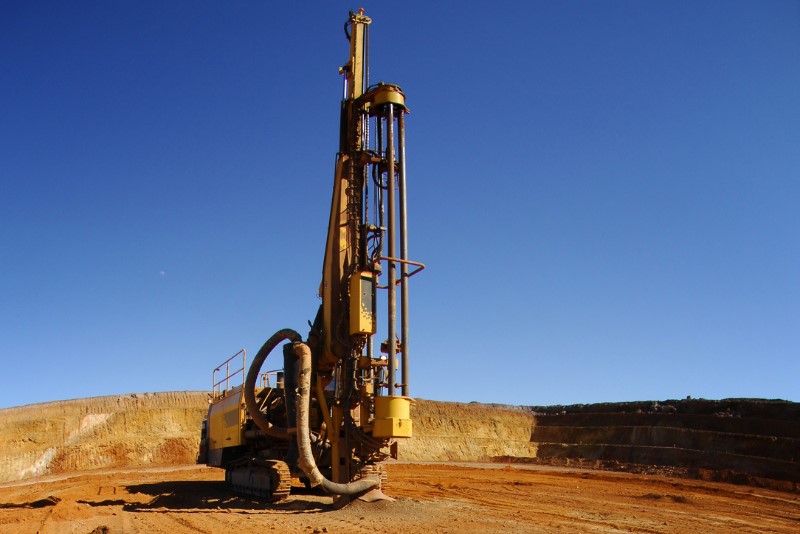Drilling machines play a crucial role in the mining industry, facilitating the extraction of valuable minerals and ores from the earth. The type of drilling machine used often depends on the mining method, the nature of the ore body, and the specific requirements of the operation.

Here are several types of drilling machines commonly used in mining:
1. Rotary Drilling Machines:
- Cable Tool Drills: These are traditional drilling machines that use a series of cables to drive a bit up and down, breaking the rock through repeated impact. They are commonly used for shallow drilling and in the exploration phase.
- Rotary Air Blast (RAB) Drills: These drills use compressed air to both rotate the drill bit and remove the cuttings from the hole. They are efficient for medium-depth drilling and are often used in open-pit mining.
- Reverse Circulation (RC) Drills: Similar to RAB drills but with a more sophisticated method of collecting the cuttings for analysis. RC drilling is particularly useful for obtaining high-quality samples of the ore.
- Core Drills: These are used to extract cylindrical samples (cores) of rock for analysis. They provide detailed information about the geological characteristics of the ore body.
2. Down-the-Hole (DTH) Drills: These drills have the hammer mechanism and bit located at the bottom of the drill string, which significantly reduces the wear and tear on the drill pipe. DTH drills are highly effective for deep holes and hard rock mining.
3. Longhole Drilling Machines: Used in underground mining, longhole drilling machines are designed to create long, straight holes for the purpose of blasting. They are essential for the development of stopes and for ore extraction.
4. Jumbo Drills (or Face Drills): These are large, multi-boom drilling machines used in underground mining to create holes for blasting. They can have multiple drill arms and are capable of drilling multiple holes simultaneously.
5. Top Hammer Drills: Commonly used in surface mining, these drills have the hammer mechanism at the top of the drill string. They are versatile and can be used for various drilling depths and rock types.
6. Underwater Drilling Machines: Used in marine mining, these specialized drills are designed to operate underwater, often on the seabed. They are used to extract minerals such as manganese nodules and polymetallic sulfides.
7. Directional Drills: These drills are capable of drilling holes at angles other than vertical, which is useful for accessing ore bodies that are not directly below the surface. They can also be used to create ventilation shafts in underground mining.
8. Blast Hole Drills: Designed specifically for drilling holes for blasting purposes, these drills are essential in open-pit mining to prepare for the extraction of ore.
9. Auger Drills: These drills use a helical screw to remove material as it drills. They are often used in surface mining for shallow holes and for environmental drilling.
Each type of drilling machine has its own advantages and is best suited for specific mining conditions and operations. The choice of drilling equipment can significantly impact the efficiency, safety, and cost-effectiveness of a mining project.




